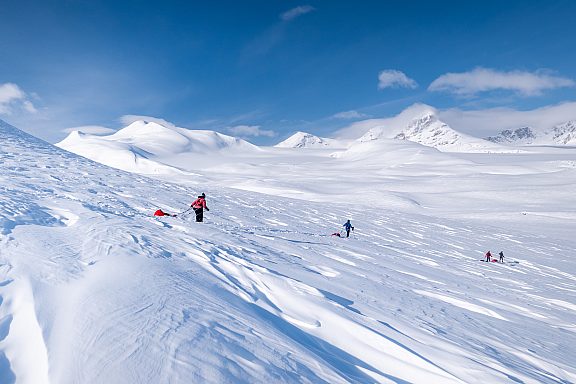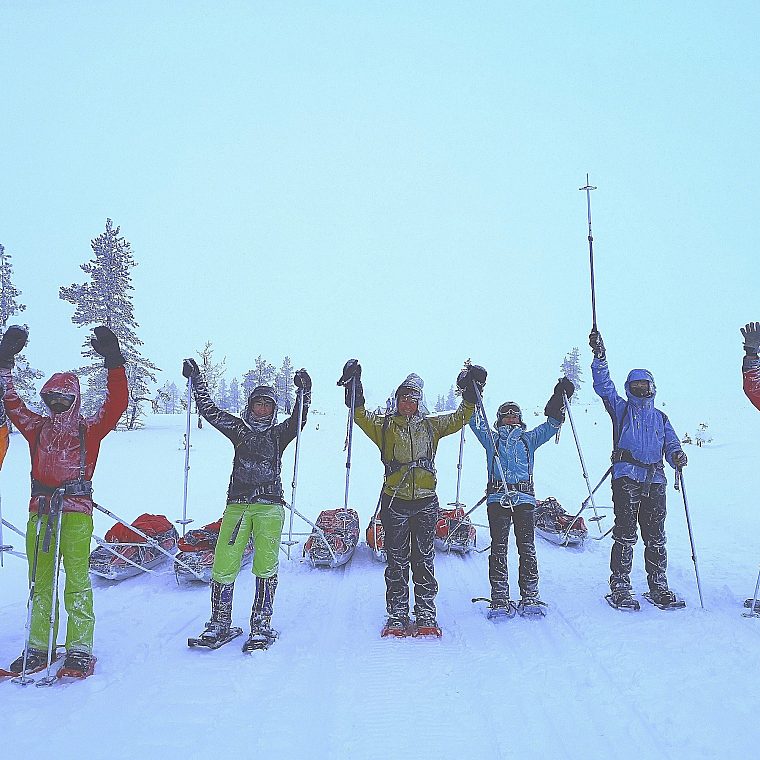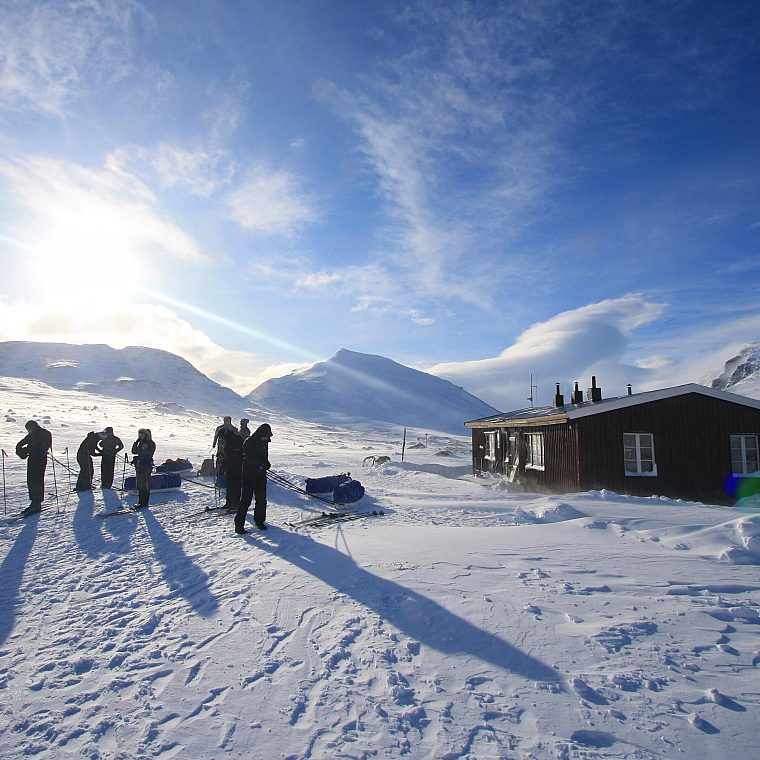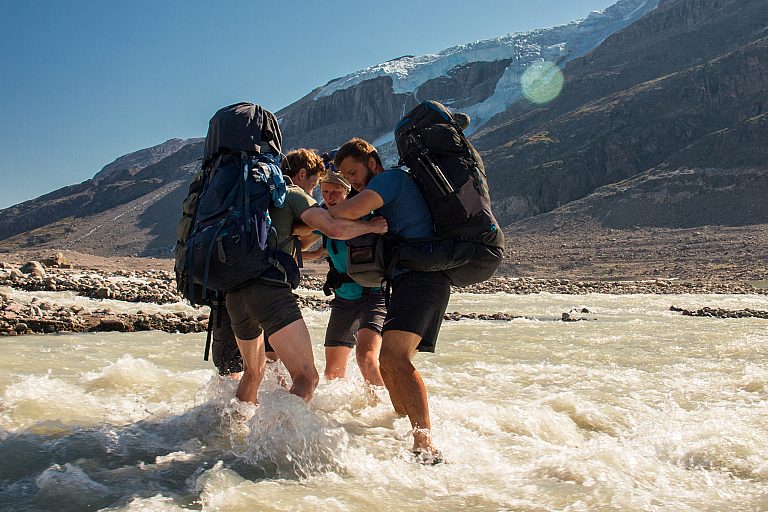
Off-track hiking
The motto of our expeditions: the should definitely be out of the ordinary. In summer, we often wander far away from any existing trails, in search of the most beautiful spots with the ultimate wilderness feeling. Since we stray off the trails, we also need to overcome any existing natural barriers ourselves: This might entail fording icy rivers, carefully tackling long and tricky boulder fields, or searching for the best way through peat bogs and bush. But don't be put off! We also try to balance hard terrain with easier sections on beaches, through riverbeds, and on rolling tundra. We look for longstanding animal migration tracks and watch the sun set from remote, nameless mountains. Spending days finding our own way through the wilderness can be mentally tough because of the unknown, but it always feels like a real and authentic adventure.
Itineraries straight from the heart
We are confident when we tell you that designing such wilderness routes is our specialty, and sets us apart from other agencies. We spend months pouring over maps and satellite images in order to design balanced and well-thought-out routes - often through uncharted territory. This is followed by a thorough recon expedition by our best guides, that will adjust the route if necessary (surprises are bound to pop up on the terrain!) The result is a route straight from the heart, with a unique and personal touch.
In the wilderness, the terrain can be both mentally and physically testing: high and steep passes, long sections through boulder fields, swamps, large rivers that have to be forded, or dense bush that might seem initially impossible to penetrate. There is an art to finding a good balance between such sections (which often give access to the most spectacular views and campsites) and easy, relaxing days.
Smart trip planning
Each obstacle has a different code to crack: we often ford rivers early in the morning (when the meltwater flow is lower) or at low tide on the beach (where it splits into several shallow channels in the intertidal zone). For passages through difficult boulder fields, we research satellite imagery well in advance to find the easiest route through what might feel like a labyrinth from the ground. In the same way, we also search for dry moraine ridges and elevated river banks to bypass swamp areas and peat bogs - precious preparation in advance that saves us a lot of time in the field, allowing us to spend more time in the most beautiful locations.
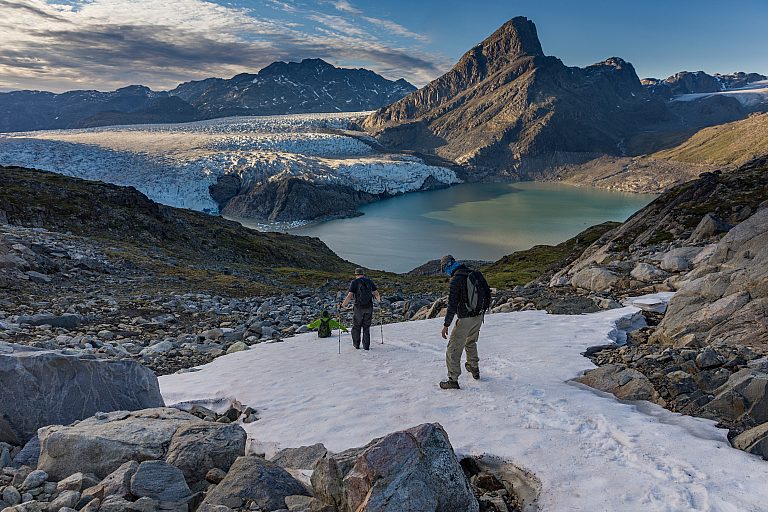
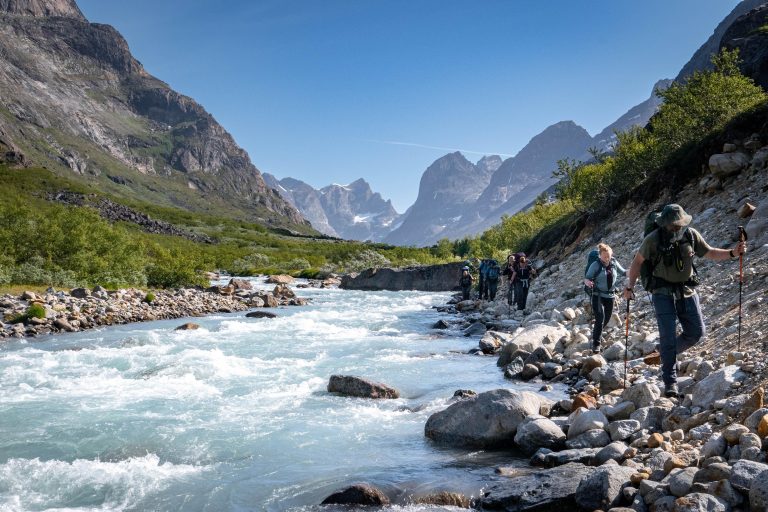
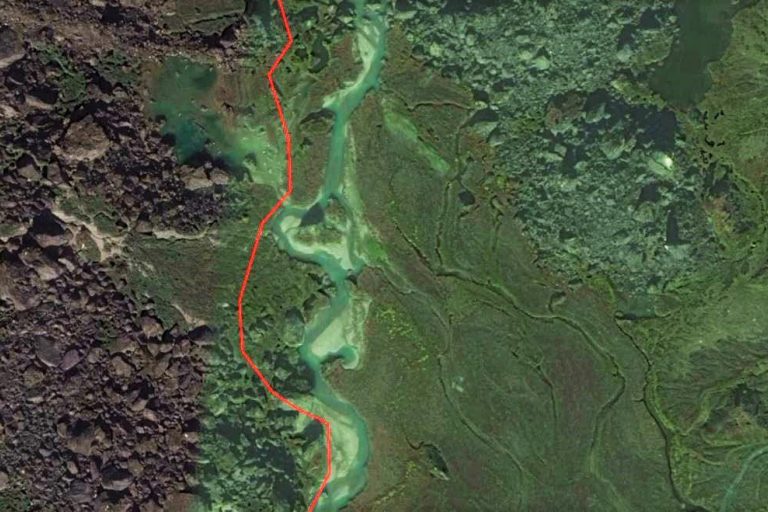
Adapted daily mileage
We will obviously progress slower on such off-track terrain than on classic trails. Daily distances during the trip will be adjusted accordingly. During an "off-trail" expedition we often hike just 12-16km per day. Altitude differences are usually limited when hiking in the Arctic. On average, we will be hiking for 5-6 hours per day - depending on the E-factor of the expedition. Often there are interesting hills or mountains to discover close to camp for those who want a little extra in the evening.
Natural highways
Even in the most remote backcountry we will find corridors which allow for easy progress. By clever route choice, we might be able to track a flat river beds for miles. In areas with lots of wildlife (reindeer, musk oxen) we also often find ancient migration trails. Finding and following such natural highways gives a feeling of satisfaction you can only experience in the outdoors.
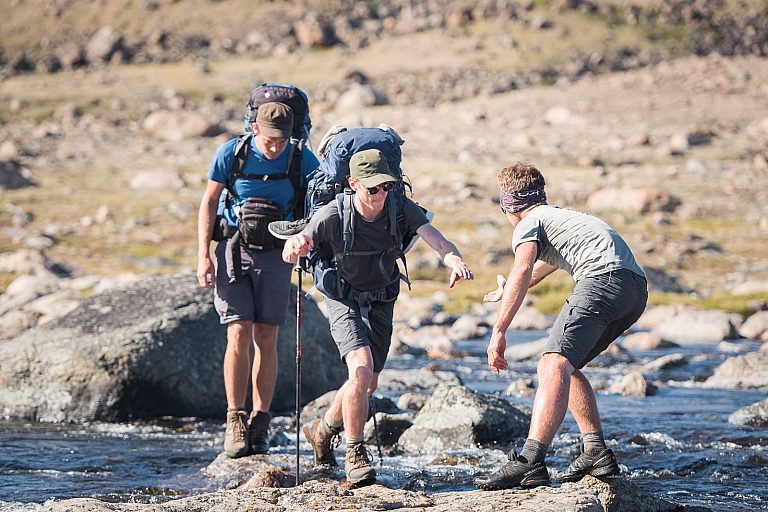
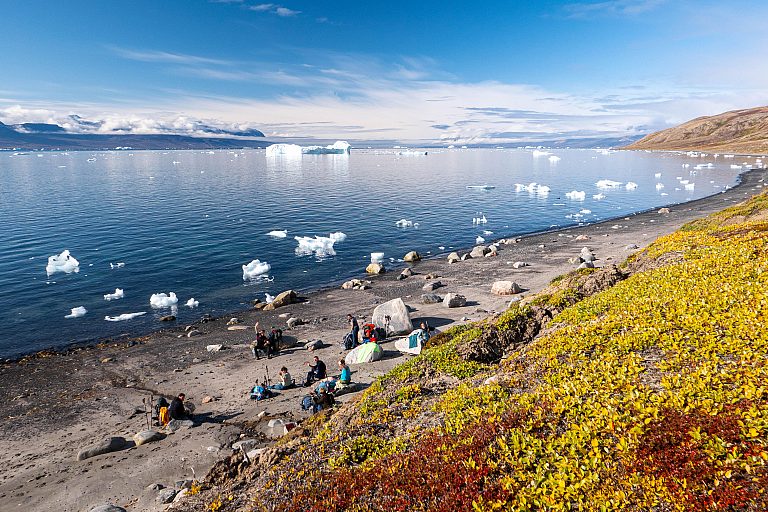
Ultimate wilderness experience
Cross-country trekking through the wilderness gives a huge thrill. We have vast swaths of land all to ourselves, sharing it only with wildlife. Much more than along frequented trails, every moment feels like a privilege. In some areas in Greenland, most mountains have no name and have never been climbed. We might just try to be the first humans at the summit.






1 -
© Willem Vandoorne
2 -
© Peter Vancoillie
3 -
©
4 - Voorbereiding van route door een moeilijke blokkenpassage in Cape Farewell Country, Zuid-Groenland. De grote blokken op de luchtfoto hebben afmetingen tot 30m, een extreem zwaar terrein dat uren vertraging kan opleveren. Langs de op voorhand bestudeerde route waren we er op een half uurtje doorheen.
© Willem Vandoorne
5 -
© Sofia Matousek
6 -
© Foto Willem Vandoorne






